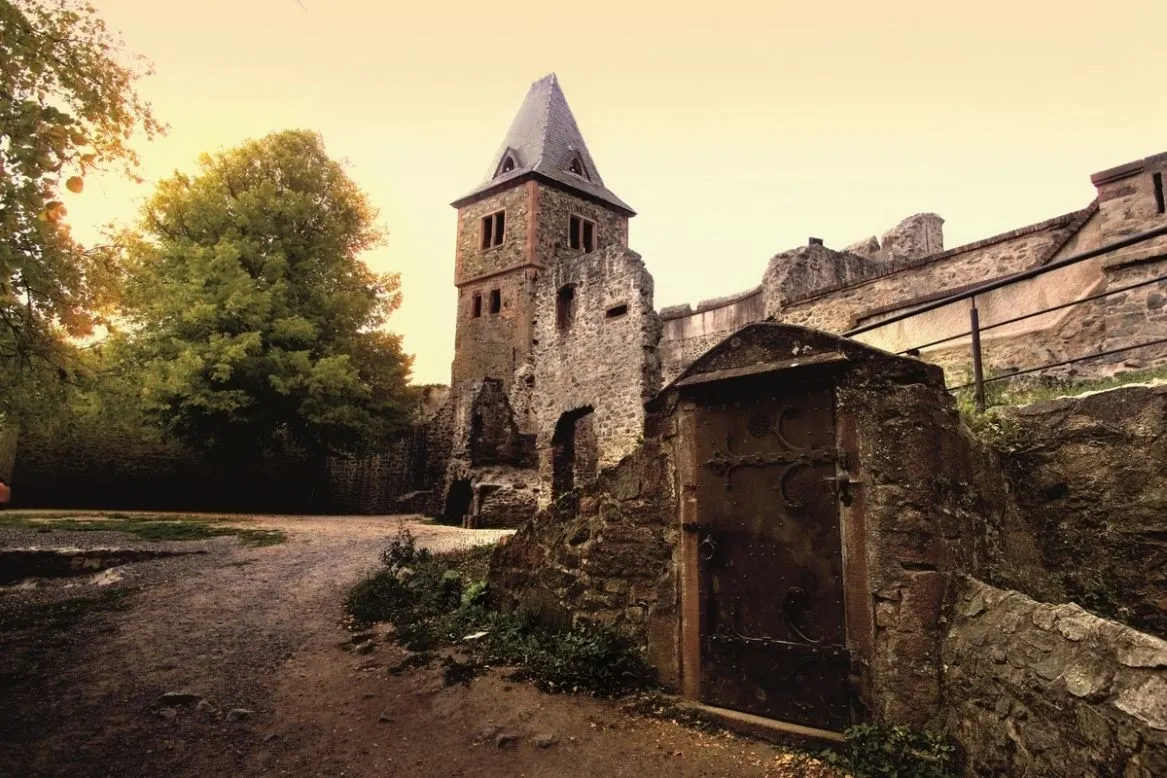Nestled atop the Odenwald, a scenic mountain range in southern Germany, you’ll find the haunting remains of Castle Frankenstein. Today, it’s famous for hosting one of Germany’s most elaborate Halloween celebrations, but its connection to tales of monsters and mad scientists goes deeper than just spooky festivities.
Despite what pop culture might suggest, the name “Frankenstein” isn’t just about Mary Shelley’s famous monster. It actually combines “Frank,” a reference to a historical Germanic tribe, and “Stein,” meaning stone. This naming style is pretty common across Germany, not just at the castle.
But there’s no denying that Castle Frankenstein is a bit special when it comes to these legends. Positioned 400 meters above the Rhine Valley, it offers stunning views over Darmstadt and has a rich history dating back to the 13th century. The castle’s long-standing myths and legends only add to its mysterious allure, making it a particularly intriguing spot, especially around Halloween.

Among the many intriguing characters associated with the castle, one name stands out: Johann Conrad Dippel. Born within its walls in 1673, Dippel became known as the castle’s resident alchemist, dabbling in the mystical arts and searching for the secrets of eternal life.
Dippel’s experiments were nothing short of bizarre. He concocted a peculiar substance called “Dippel’s Oil,” made from a mixture of horns, blood, leather, and ivory. He claimed this mysterious black fluid was the legendary “elixir of life,” capable of curing various ailments, from epilepsy to the common cold.
While there’s no solid evidence that Dippel conducted Frankenstein-like experiments with human bodies, he was undeniably fascinated by anatomy and the soul. He believed in the idea of transferring souls between corpses and even devised a strange contraption involving a funnel, hose, and lubricant to supposedly achieve this unusual feat.


Dippel’s end came in 1734, believed to be from a stroke, though rumors persist that he might have been poisoned due to his controversial experiments and sour relations with the local community. This element of mystery only adds to the intrigue surrounding his life and work.
The connections between Dippel’s macabre pursuits and Mary Shelley’s iconic novel “Frankenstein” remain speculative yet tantalizing. It is said that the Brothers Grimm might have relayed the tale of Dippel to Mary Shelley’s stepmother, a translator of German fairy tales, which could have indirectly inspired Shelley. During her travels in the Rhine region close to Castle Frankenstein in 1814, she could have absorbed elements of the local lore, though she never confirmed any direct influence of the castle or Dippel on her work.
Today, Castle Frankenstein still captures the imagination of those who visit. Though it fell into decay in the 1700s, the 19th-century restoration embraced the Gothic revival style, adding romantic pointed towers that resonate with visitors looking for traces of the fantastical and the eerie. Despite these newer additions, elements of the original structure, like parts of the lower walls and the foundations of the drawbridge, remain visible. The castle is ensconced in well-tended hiking trails that invite visitors to explore the rich folklore enveloping the area, making it a lasting emblem of the mysterious and the legendary.




